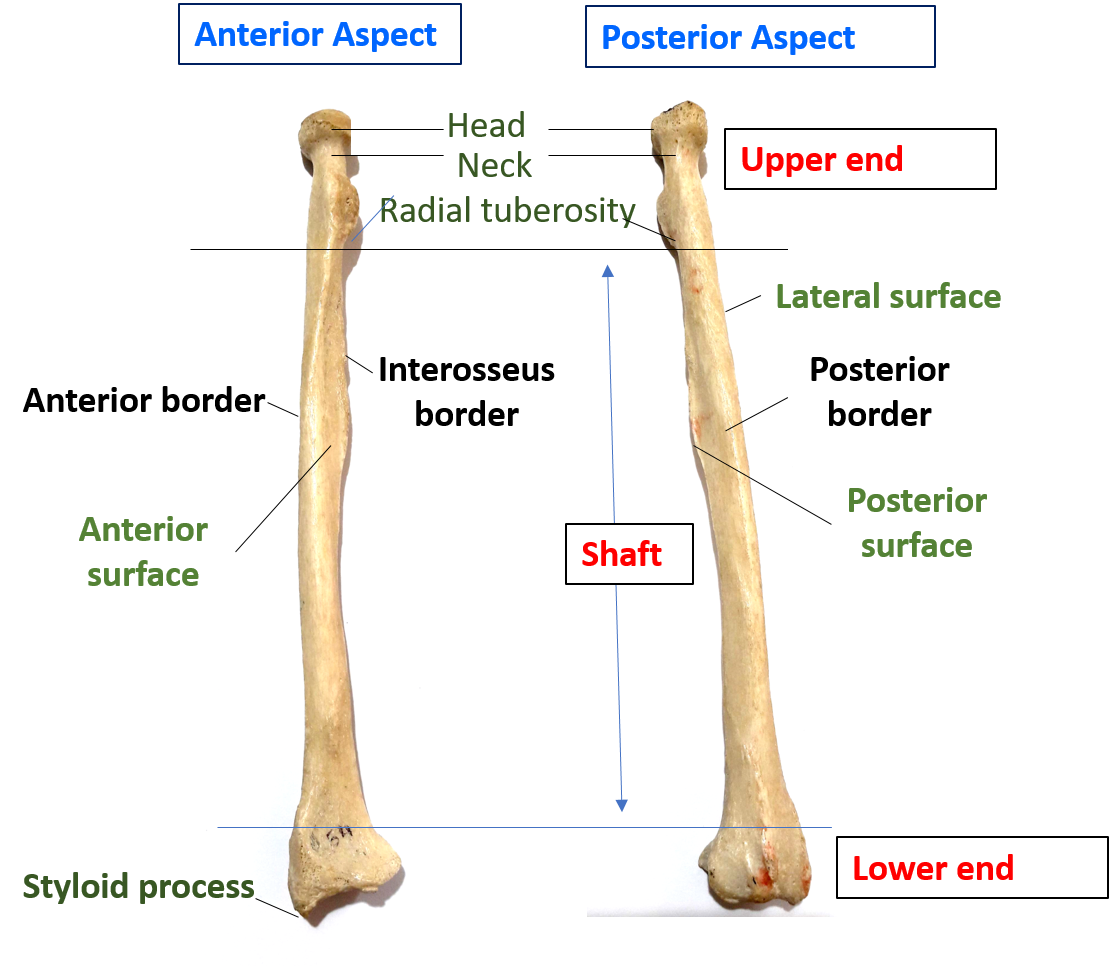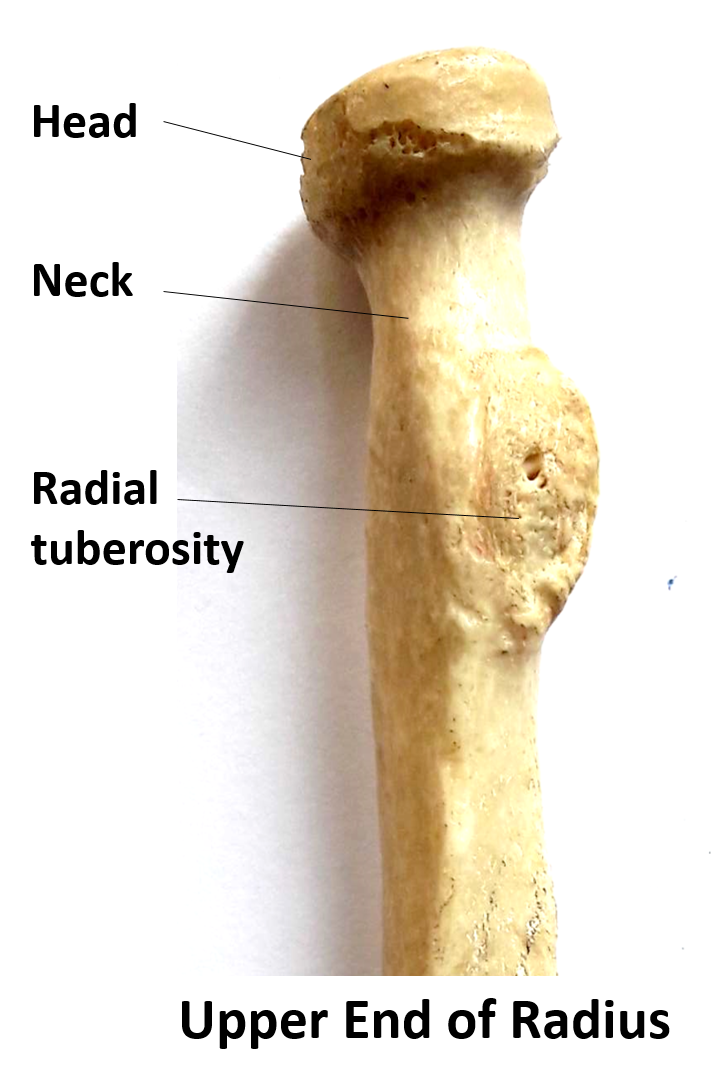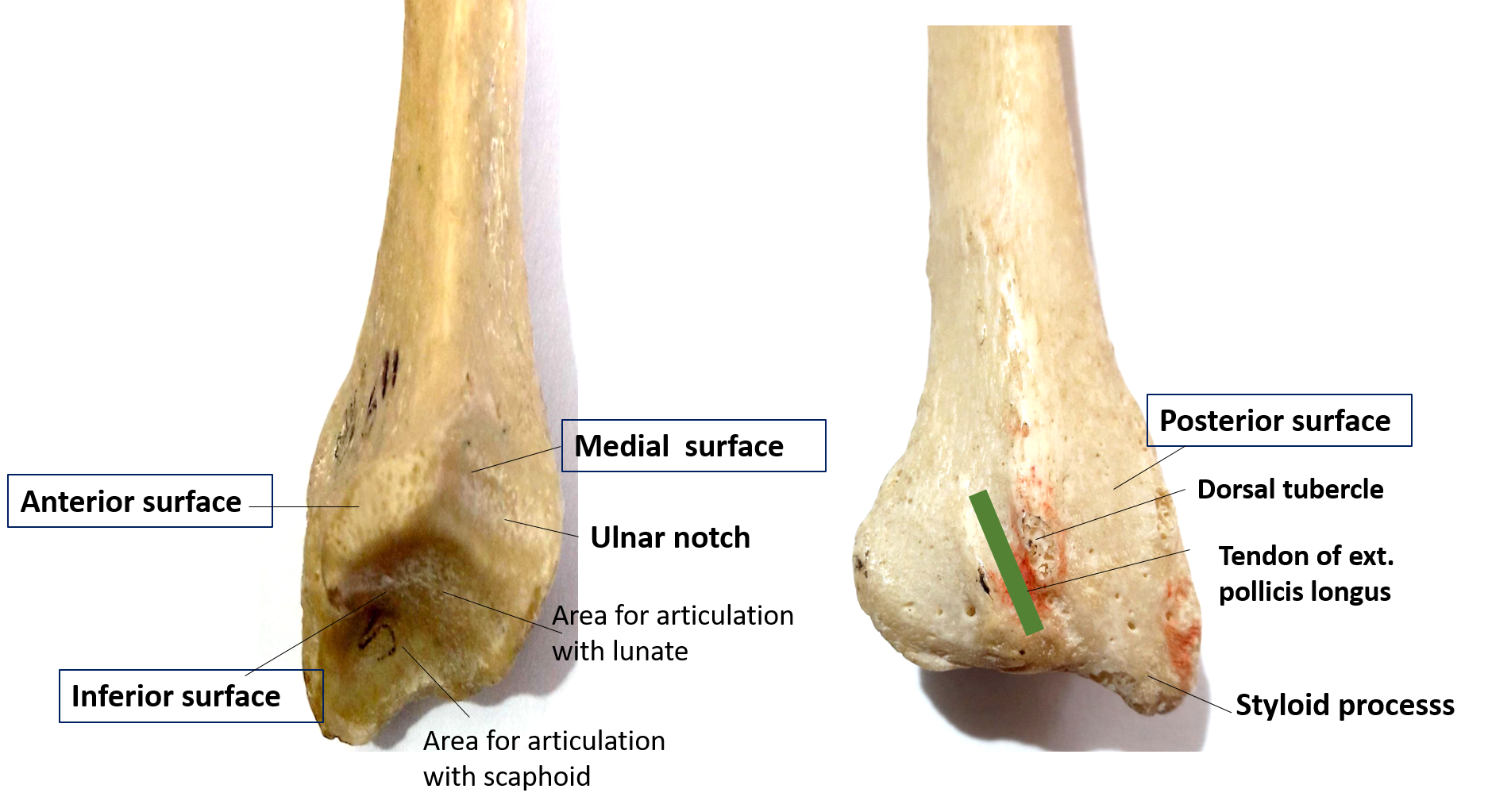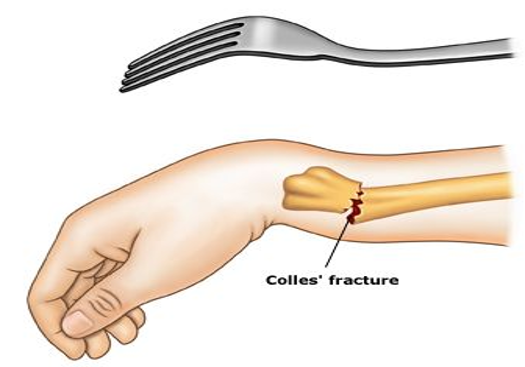Advertisements
Which type of bone is Radius? Where is it located?
Radius is a long bone. It is the located on the lateral side of forearm.

How will you determine the side of radius?
To determine the side of radius, the following points should be noted:
- The upper hand has a disc like head , whereas lower end is expanded.
- Medial border is the sharpest and presents radial tuberosity at the upper end.
- Posterior surface at the lower end presents a tubercle called tubercle of Lister.
What are the parts of radius?
Like any other long bone radius also has an upper end, shaft and lower end.
- Upper end: consists of head, neck and radial tuberosity.
- Shaft: has 3 borders ( anterior, posterior and interosseous) and 3 surfaces ( anterior, lateral and posterior)
- Lower end: is expanded from side to side , laterally there is a bony projection called styloid process.

What are the features/parts of upper and lower ends of radius?
Upper end of Radius: has following parts:
- Head : is disc shaped. It’s upper surfsce is concave which articulates with capitulum of humerus. Most of the circumference of head is surrounded by annular ligament, except medially where it articulates with the radial notch of ulna to form superior radioulnar joint.
- Neck: constrictions below head is called neck. It is also surrounded by annular ligament.
- Radial tuberosity: is the bony prominence below the medial part of neck. Has anterior smooth and posterior rough part.

Lower end of radius:
- Has anterior, posterior, medial ,lateral and inferior surfaces.
- Inferior surface articulates with scaphoid (laterally) and lunate (medially).
- Lateral surface is continuous with styloid process.
- Medial surface has unlanr notch wich articulates with head of ulna to form inferior radioulnar joint.

Name the muscles attached on radius.
Following muscles are attached:
- Radial tuberosity: Biceps brachii on posterior rough area of radial tuberosity.
- Upper 2/3rd of anterior surface: Origin of Flexor pollicis longus.
- Lower 1/3rd of anterior surface: Insertion of Pronator quadratus.
- Upper part of anterior border (Anterior Oblique Line) : Origin of Flexor digitorum superficialis.
- Upper part of anterior, lateral and posterior surface: Supinator.
- Middle of lateral surface : Pronator teres.
- Lowest part of lateral surface: Brachioradialis.
- Posterior surface: Abductor pollicis longus and Extensor pollicis brevis .

How is radius ossified? Which is the growing end?
Radius ossifies by one primary center of ossification for the shaft and two secondary centers , one each for each end. Lower end is the growing end.
Applied Aspect
What is ‘Dinner fork deformity’?
Fracture of lower end called Colles’s fracture results in ‘Dinner fork deformity’. The distal fragment of radius following fracture overrides and is displaced dorsally.


This is very helpful
It was a good one